
The AFR quotes Wayne Swan this morning confirming that the Government’s budget strategy has been driven by the objective of lowering interest rates:
“We’ve . . . engineered a macro rebalancing from fiscal to monetary policy…Our spending restraint has given the RBA scope to reduce interest rates over the past year or so, which is providing support to non-mining sectors that are under pressure from the high dollar and interest sensitive sectors like housing,” Mr Swan said.
Mr Swan reiterated it was “unlikely that the budget will be returned to surplus this financial year”.
Well that’s kind of stating the obvious isn’t it? What the audience seems not to have done is ask how it’s turned out.
Certainly the rate cuts have flowed. But it is equally clear that Australian households have not responded to the -1.75% of official interest rate reductions since early-November 2011, failing to foster anywhere near the same level of demand as previous interest rate-cutting cycles.
Nowhere is this more evident that the Australian housing market, which has so far shown little pick-up in demand despite variable mortgage interest rates falling by around -1.35% over this period.
To illustrate just how muted the response to interest rate cuts is this time around, consider the below charts, which compare the growth of various housing demand indicators against previous interest rate cutting cycles, namely those starting in 1990, 1996, 2001 and 2008 (depending on data availability).
First, below are the various housing credit data provided by the RBA and the ABS:
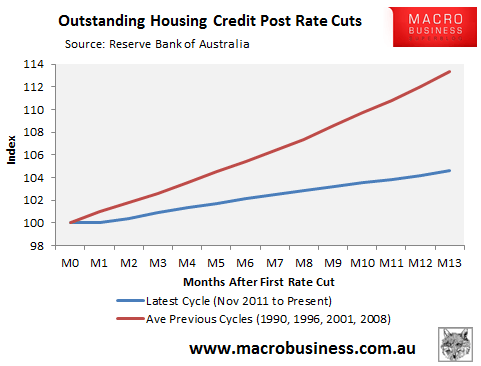
As you can see, total outstanding housing credit has risen by only 4.6% since October 2011, versus an average 13.3% rise at the same stage of the four prior interest rate-cutting cycles.
It’s a similar story for the ABS housing finance series, which has registered only 11.5% growth in the total value of mortgage commitments (i.e. owner-occupied excluding refinancings plus investor finance), versus an average 34.0% growth in the previous four interest rate-cutting cycles:
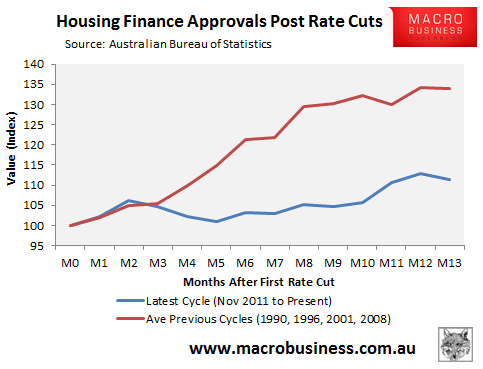
As noted yesterday, First home buyers (FHB) have showed the weakest response to interest rate cuts, registering a fall of -6% in the number of FHB mortgage commitments this cycle, compared with an average 32.4% increase in the four prior rate-cutting cycles; although changes to various FHB incentives have played a major role in this outcome:
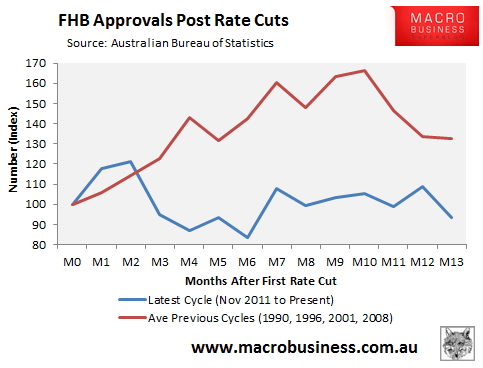
Turning to house prices, there has been minimal (if any) growth in housing values since the RBA began to cut interest rates in early-November 2011, with RP Data registering an overall decline in dwelling prices of 1.5% over the period to December 2012 and Residex recording a rise in house prices of only 0.5% to November 2012. This compares to an average increase of 14.6% (RP Data) and 11.9% (Residex) at the same stage of the previous three rate-cutting cycles (see below charts).
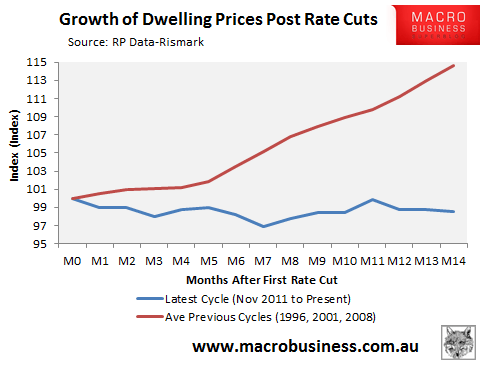
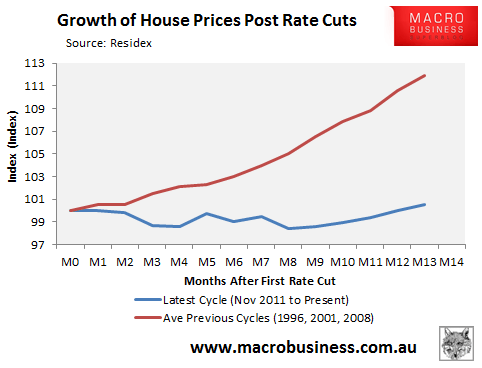
Finally, as noted previously, new house sales have contracted sharply since the RBA first cut rates in early-November 2011, declining by -19% over this period compared to an average increase in sales of 29.3% in the previous three interest rate-cutting cycles:
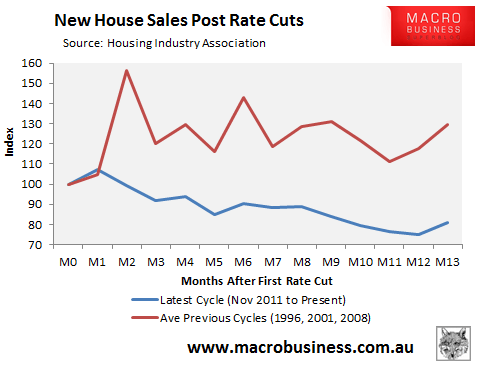
Clearly, the RBA has its work cut out if Swan is to successfully engineer a transition to non-mining led growth.

